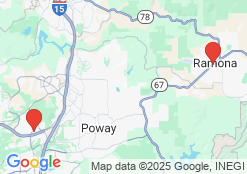Inlays and Onlays: An Affordable and Conservative Way to Repair Damaged, Decayed Molars
At PQ Family Dental, Dr. Tim Belnap and Dr. W. Brandon Jergensen offer inlays and onlays to repair damage caused by dental decay. At their Rancho Peñasquitos, CA, and Ramona, CA, offices, they use a state-of-the-art CEREC® machine, allowing them to provide lifelike restorations in a single day, saving you the hassle of multiple dental visits. When you come into our office, Dr. Belnap or Dr. Jergensen can visually examine your damaged tooth as well as use advanced digital x-rays and other technology to determine the right type of restoration for you.
What Are Inlays and Onlays?
In many ways, inlays and onlays are very similar to crowns, and they perform many of the same functions. While a crown fits over the entire tooth, an inlay or onlay will fit over the top of a damaged molar, repairing areas of extensive decay, strengthening a weakened tooth, and helping to prevent additional damage. An inlay or onlay can also seal a large cavity to prevent the reentry of bacteria. Inlays and onlays differ from one another only in size. Inlays are smaller and fit between the sharp points on your molars. Onlays are larger and cover the cusps as well as part of the sides extending down your teeth.

Inlays and onlays are very similar to crowns and perform many of the same functions.
Inlays, Onlays, and Other Restorative Options
If you are suffering from dental decay, your dentist may recommend a filling, inlay, onlay, or crown. The right type of restoration will depend on the size of your cavity and the extent of any damage. A filling is usually suitable for a small- to medium-sized cavity, while a crown is appropriate if decay has destroyed a large portion of your tooth. Inlays and onlays are a good option for those patients whose needs fall in the middle. Drs. Belnap or Jergensen may place one of these restorations if you have a large cavity, but a good portion of your tooth still remains intact.
Each of these dental restorations offers its own set of benefits. Crowns are incredibly durable, and they can repair even very severe tooth decay. Alternatively, fillings are quite affordable, and your dentist will need to remove a very small amount of tissue to place them. Inlays and onlays offer some of the advantages of each, including the durability of crowns and the affordability of fillings. During a consultation, our doctors can determine which dental procedure would benefit you the most.
A filling is usually suitable for a small- to medium-sized cavity, while a crown is appropriate if decay has destroyed a large portion of your tooth. Inlays and onlays are a good option for those patients whose needs fall in the middle.
How We Place Inlays and Onlays
Before he can place your inlay or onlay, your dentist will need to prep and reshape your tooth. By removing a conservative amount of enamel and underlying tissue, you dentist can create sufficient room for the restoration so it will fit securely and naturally against your tooth. Through this process, your practitioner will also be able to remove any bacteria or decayed tissue.
Next, Dr. Belnap or Dr. Jergensen will use our CEREC system to take impressions of your tooth. The imaging device will create digital models, which are typically much more accurate than manual molds. Your dentist can then use these images along with advanced computer software to design your restoration. The designs will then go to our in-office CEREC machine. Similar to a 3-D printer, this device will carve out a remarkably precise restoration from solid porcelain. The material will precisely match the color of your tooth with a beautiful sparkle similar to your tooth enamel. Once it is finished, Dr. Belnap or Dr. Jergensen will attach the restoration to your tooth. The entire process typically takes approximately one hour, allowing you to enjoy near-complete dental function as soon as you leave the office.
Contact Us for a Consultation
To learn more about inlays and onlays, contact PQ Family Dental online today. You can also call our Rancho Peñasquitos office at (858) 484-9222 or our Ramona location at (760) 789-6200 to speak to a member of our team.

